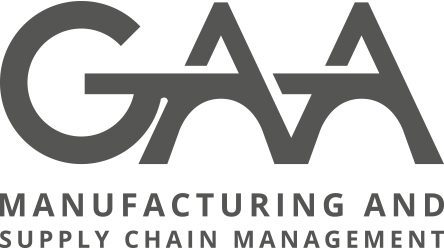Safety is Our Overriding Priority
"Every team member has a role in helping GAA succeed in SAFETY EXCELLENCE."
- Kevin W. Williams, President & CEO
Safety is our overriding priority - period.
Our mindset is that EVERY accident can and will be avoided, and we are committed to providing employees with a safe, healthy and injury-free environment.
Our Safety Culture is a state of constant vigilance and continuous effort - exploring new ways to make GAA safer and always striving for Safety Excellence. That's why everything we do starts and ends with Safety, and that's why Safety is everyone's responsibility.
Our team is our most valuable asset, and every team member's safety and health are our first priority. On a fundamental level, GAA as an organization understands that "Safety is a Journey, Not a Destination." We are a family of companies made up of team members who are all laser-focused on Health and Safety. It permeates our culture and the working life of every site and every team member.
Safety Pledge
We encourage everyone - from our employees, suppliers and partners to anyone in our industry and beyond - to take the National Safety Council's "Safe at Work" Pledge.
Safety is everyone's responsibility and, by taking this pledge, you can help keep safety top-of-mind.
- Never compromise my own Safety or the Safety of my coworkers to get the job done
- Actively look for hazards, promptly report them and take appropriate action to warn others
- Be a good safety role model for my friends and family even when off the job

Safety Drives All We Do
Promote a Safe and Healthy work environment based on employee involvement, ownership, teamwork, education, training and leadership.
Safety Culture
Safety is engrained in the GAA culture. It's at the forefront of everything we do. It's the first thing we talk about every time we talk. In every meeting, plant visit, process design, innovative solution, in everything we do - Safety is #1.
Led by GAA's Health, Safety and Environment (HSE) Director, our Safety Culture permeates the organization - continuously monitored and improved - from the top-down and from the bottom-up.
Across all GAA companies, we employ consistent safety protocols, best practices and adhere to all local, state and federal laws and regulations. We also provide training, continuing education and ongoing myriad opportunities for conversation on Safety and Health. In addition, every team member is required to report all safety issues, accidents, injuries, near misses, unsafe conditions as well as any proactive ideas to support our mission, vision and goals around Safety and Health.
We take all these steps so that we remain in lockstep around Safety, and our leadership and management teams are actively involved with employees in establishing and maintaining an effective Safety program with activities including:
- Daily production meetings begin with Safety talks and concerns
- Promotion of participation in the Safety Committee
- Providing Safety and Health education and training
- Renewing and updating workplace Safety rules as required
